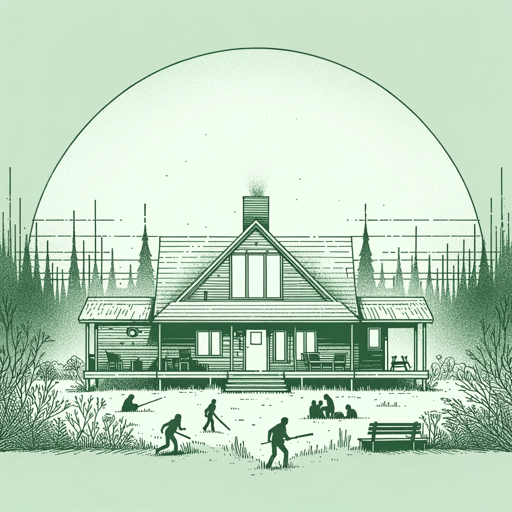45 pages • 1 hour read
Paul TremblayThe Cabin at the End of the World
Fiction | Novel | Adult | Published in 2018A modern alternative to SparkNotes and CliffsNotes, SuperSummary offers high-quality Study Guides with detailed chapter summaries and analysis of major themes, characters, and more.
Symbols & Motifs
The Grasshopper Jar
The jar containing the grasshoppers symbolizes the cabin and its inhabitants. Wen captures seven grasshoppers, foreshadowing the seven people who will soon be confined together in the holiday home. Wen’s concern about the insects’ survival represents the life-or-death situation her family will face and the violent deaths that will occur in the cabin. When Wen later realizes that she failed to free the grasshoppers, Leonard claims he released them. Andrew’s discovery of the jar, still sealed, emphasizes the meaninglessness of Leonard’s assurances. Not only does he neglect to save the insects, but he can’t keep his promise that Wen won’t be harmed.
Additionally, the grasshopper jar represents the intruders’ conception of God. Wen catches the grasshoppers to study their behavior, and the group seems to believe that God views humanity in a similarly detached manner. When Leonard describes God’s will, he presents a God who dispassionately wields the power of life and death.
Scars
The novel’s references to scars represent the theme of The Traumatic Effects of Violence. The beginning of the story reveals that both Wen and Andrew have scars. Wen’s scar is from the surgical correction of a cleft palate—a procedure that continues to trouble her.
Featured Collections
Books Made into Movies
View Collection
Fate
View Collection
Fear
View Collection
Good & Evil
View Collection
Horror, Thrillers, & Suspense
View Collection
Safety & Danger
View Collection
The Best of "Best Book" Lists
View Collection
Trust & Doubt
View Collection
Truth & Lies
View Collection
YA Horror, Thrillers, & Suspense
View Collection

